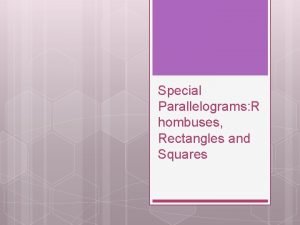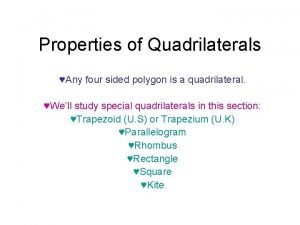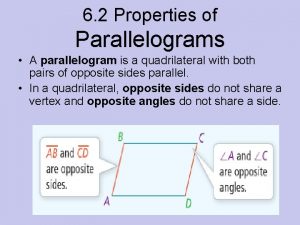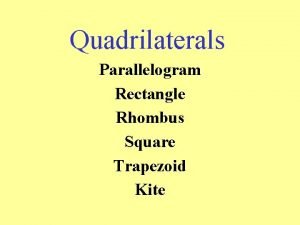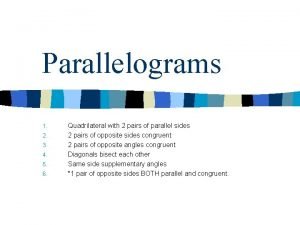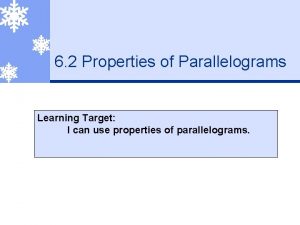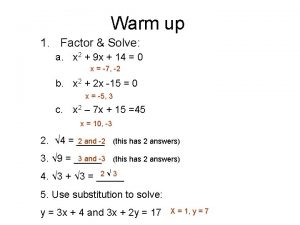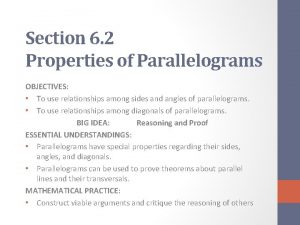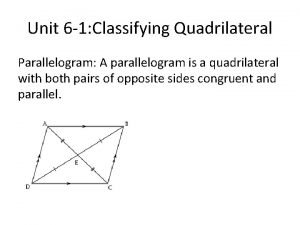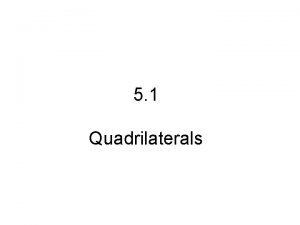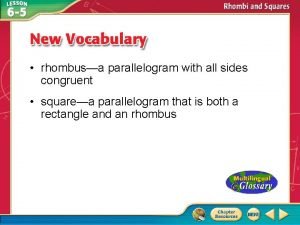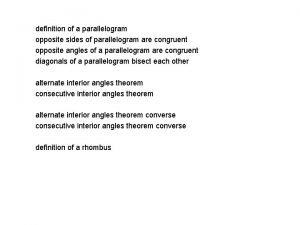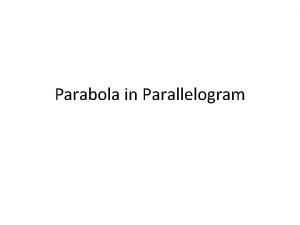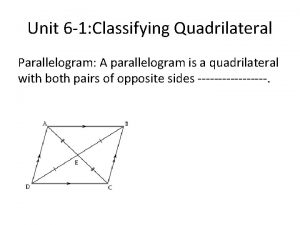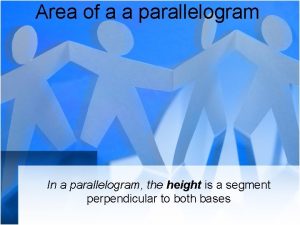Activity 13 Properties of Parallelogram Class 9 th











- Slides: 11

Activity -13 Properties of Parallelogram Class 9 th Prepared & Presented By Mrs. Pramila Kumari Sahoo TGT, Mathematics JNV, Jagatsinghpur Odisha

Objective To explore similarities and differences in the properties with respect to the diagonals of a Parallelogram. • A diagonal of a parallelogram divides it into two congruent triangles • Diagonals of a parallelogram bisect each other.

Definition: A Parallelogram is a four-sided flat shape with straight sides where opposite sides are parallel. A B D C

Materials Required • Chart Papers • Pencil • Compass • Scale and • A Pair of Scissors

Pre-requisite Knowledge • Construction of the diagram of a Parallelogram • Knowledge of properties and angles of a Parallelogram.

Property 1: Diagonal divides parallelogram into two B congruent triangle: • Make a parallelogram on a chart paper and cut it. • Draw a diagonal of that parallelogram • Cut along the diagonal and obtain two triangles. A D C B C

• Superimpose one triangle onto the other and it will exactly superimpose. • Hence a diagonal divides a parallelogram into two congruent triangles. Triangles ABD and CDB are congruent to each other. A (C) B (D) D (B)

Observations Two triangles are congruent to each other.

Property 2: Diagonals of a parallelogram bisect each other • Draw the parallelogram and its both diagonals. • Cut the four triangles formed. Name them 1, 2, 3 and 4. • Observe that triangle 2 is congruent to triangle 4 and triangle 1 is congruent to triangle 3 by superimposing them on each other. A 4 1 3 B D 2 C O O

Observation O • Base of triangle 2 = Base of triangle 4 • Base of triangle 1 = Base of triangle 3 • Thus the diagonals bisect each other. O

Thank You
 Properties of parallelogram for class 9
Properties of parallelogram for class 9 Hombuses
Hombuses Any four sided polygon
Any four sided polygon Properties of parallelograms 6-2
Properties of parallelograms 6-2 Square rectangle trapezium parallelogram rhombus kite
Square rectangle trapezium parallelogram rhombus kite Is a square a rhombus
Is a square a rhombus Properties of parallelogram
Properties of parallelogram Properties of parallelogram
Properties of parallelogram Properties of parallelogram
Properties of parallelogram Parallelogram questions for class 8
Parallelogram questions for class 8 Descriptive matter
Descriptive matter Physical and chemical properties
Physical and chemical properties

